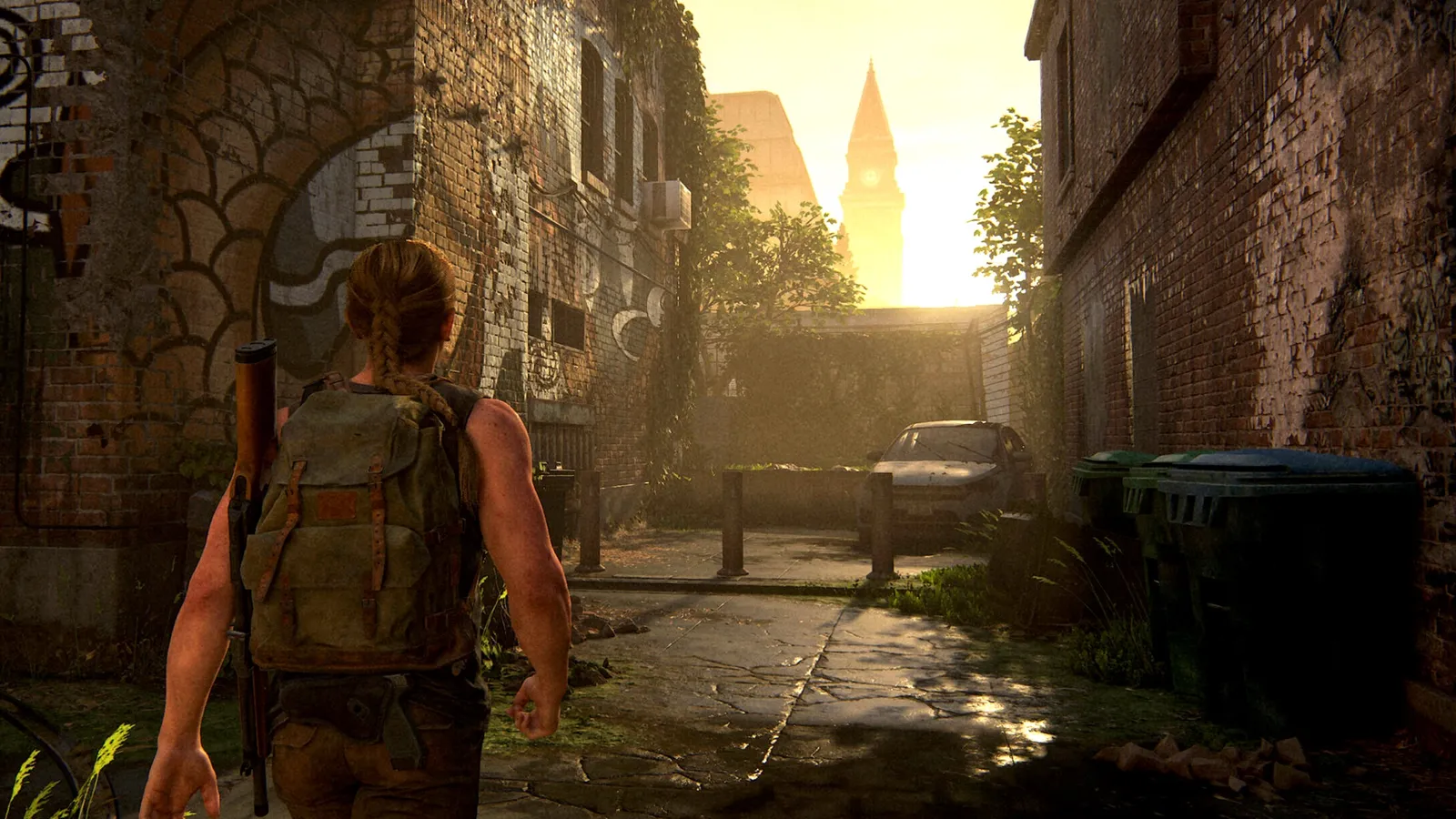While The Last of Us Part 2 Remastered brings a suite of new features and quality-of-life enhancements to the table, it still rests on the foundation of a game that was always divisive. The original title, released seven years after the groundbreaking debut of The Last of Us, leaned heavily into cinematic storytelling. By that time, such mature presentation no longer felt revolutionary. However, the game still stirred powerful reactions online due to its controversial narrative, sparking intense discourse.
Now, several years and a successful TV adaptation later, this remaster arrives on PC as the most content-rich edition of the game to date. Yet, despite the additions, the PC port suffers from inconsistent performance, and the game itself remains as contentious as ever.

Performance and Technical Hiccups
Initial performance on a system featuring an RTX 3060 Ti appears adequate in the game’s early snowy segments, marred only by occasional texture issues. But performance noticeably degrades in the more complex urban environments, where stuttering and texture pop-ins occur frequently. Frame rates also drop significantly during densely populated scenes, especially on medium settings at 1080p resolution—even on hardware that exceeds the recommended specifications.
Though it avoids the disastrous state in which the original game’s port launched, the remaster is far from polished. A day-one patch is intended to address some of these problems, but given the scope of the issues, a single patch likely won’t be enough to fully stabilize the experience.
Upgrades and Accessibility
In terms of enhancements, this edition offers several notable improvements. Features such as ultrawide monitor support, HDR capabilities, and expanded graphics settings allow for a more customizable visual experience. Accessibility receives a significant boost as well, with updates like descriptive audio and a “speech to vibration” function that enables the DualSense controller to provide tactile feedback during dialogue.
These updates are in line with what has been seen in other major PlayStation titles brought to PC, and they serve to make this the most complete version of The Last of Us Part 2 currently available.
New Modes: From Musical Interludes to Roguelike Tension
Among the additions are two new gameplay modes. One allows players to freely play Ellie’s guitar, offering a lighthearted distraction that may appeal more to modding enthusiasts than general audiences. The other, titled No Return, introduces a roguelike experience filled with procedurally generated combat scenarios.
No Return stands out as the highlight of the remaster. Unlike many zombie-themed games that rely on overwhelming players with sheer numbers, this mode emphasizes strategic use of limited resources against smaller, smarter enemy groups. Each run is short—under an hour—but highly customizable, with different characters, mission types, and difficulty settings.

Though the core gameplay remains consistent with the main campaign—stealth, crafting, and tense combat—the rogue elements provide a distilled experience focused purely on its mechanical strengths, avoiding the narrative’s slower or more controversial moments.
Story Themes: Brutality in a World of Grief
The narrative shifts from the original game’s exploration of fatherhood and moral resilience to a darker examination of vengeance and emotional collapse. The acting is powerful, and the visual direction impressively cinematic, but the script walks a precarious line.
While the depiction of violence is intended to be empathetic and sobering, the underlying message can feel overly blunt. The story draws inspiration from real-world conflict, particularly the Israeli-Palestinian struggle, which adds a layer of uncomfortable subtext to the ongoing feud between in-game factions like the WLF and the Seraphites. The game’s creative director has cited the deaths of Israeli soldiers as a key influence, creating unintentional parallels that complicate the narrative.
The emotional arc follows Ellie and Abby as they spiral through cycles of revenge, with the broader theme being that violence is morally corrosive—regardless of justification. However, this message is often undermined by a lack of nuanced power dynamics, rendering it simplistic rather than thought-provoking.
Repetition and Predictability
Much of the plot involves a character setting off to kill another, only to endure a brutal journey and eventually conclude that violence is harmful. Dialogues frequently hinge on hypotheticals about revenge and the ease with which one could be driven to murder. These themes, reiterated ad nauseam, leave little room for deeper exploration.
Despite the excellence in direction and performance, the core message feels underdeveloped. While technically sophisticated and visually stunning, the narrative loops around its theme without offering fresh insights, ultimately leaving the emotional impact diluted.
Gameplay vs. Narrative: A Dual Identity
Exploration, while occasionally rewarding, mostly serves as a bridge between dramatic story beats. Players collect materials and ammunition in small pockets of freedom, but the experience is tightly controlled overall. Objectives are often spelled out by companions or highlighted through repetitive hints, such as prompts to break windows or unlock doors from the opposite side. These interruptions can feel intrusive and at odds with the otherwise immersive stealth and combat gameplay.
However, the game excels at blending narrative and gameplay through well-integrated environmental storytelling. Journals, notes, and visual cues organically lead players into major encounters. One standout moment involves a scripted sequence where a routine skirmish escalates into a frantic escape down a snowy hillside, showcasing the game’s impressive pacing and cinematic flair.
Combat: Visceral and Tactical
Combat in The Last of Us Part 2 delivers excitement through its brutal realism and scarce resources. Players must constantly weigh their options—whether to engage in melee, use limited ammunition, or rely on stealth. The animations add dramatic flair, with characters utilizing the environment and allies during fights to execute creative takedowns.
The audio design is a standout, particularly in stealth scenarios, where ambient sounds rise to a crescendo as enemies approach. While the mechanics don’t break new ground in the genre, the intensity and polish ensure that encounters remain engaging throughout.
Final Thoughts
The Last of Us Part 2 Remastered is a paradox. On one hand, it showcases remarkable production values and offers refined mechanics that shine in the newly added No Return mode. On the other, its story—while masterfully performed—struggles under the weight of its own moral messaging and controversial metaphors.
The PC version’s technical inconsistencies make it difficult to fully appreciate these strengths, especially given that even mid-tier systems encounter performance issues. Despite its enhancements, the remaster can’t escape the polarizing nature of the original, and it is this dissonance between gameplay excellence and narrative missteps that defines the experience.
Ultimately, the new roguelike mode may offer the only compelling reason for revisiting this iteration. It distills what the game does best—tension, strategy, and spectacle—into a compact, replayable format free from the baggage of its story.
